10 Tips For Taking Great Pictures Of Bees
I have a very basic camera, and don't always get the quality of images I would like. Maybe I am not the best photographer either. However, I do know a fair bit about bees, which is handy if you want to take a few pics! If I were better at snapping photos and had a super snazzy camera, some of the image on this site may look a little different - within reason.
Here are 10 tips for taking great pictures of honey bees, bumble bees and various solitary bees, as well as some of my own pictures of bees. (This page is an update from the previous version, as of June 2018).
The tips are not technical in terms of camera equipment, lenses etc, rather they are based on my knowledge of bees.
For example if you are photographing bees for the purpose of bee identification then you'll find a few tips on what kinds of snaps to take.
10 Tips For Taking Pictures Of Bees
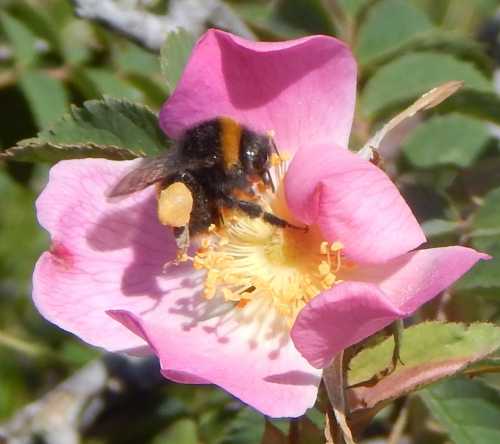 Bumble bee foraging on rose.
Bumble bee foraging on rose.I'm not a photographer, but as stated above, I can give you a few tips for taking pictures of bees, based on my knowledge of this insect.
After all, you'll have more success if you look in the right places at the right times, and photograph the right kind of things!
So here are my tips:
1. Seek out areas with an abundance of flowers, especially herbs, cottage
garden flowers, and wildflowers. If you do not have a garden, formal public planting schemes in parks may be helpful. However, please note that borders filled
with ornamentals such as bedding begonias, bizzy lizzy, and highly
cultivated petunias, may not be as promising as they first appear,
because these have limited value in terms of nectar and pollen.
You could also target wild grassy verges alongside roads, canals, and railway lines. Such areas, though not necessarily obvious at first, can provide great wildlife havens, and you might get some great pictures of bees foraging on wildflowers, some of which may be less common species (depending on floral abundance).
However, don't neglect to take a look at sandy coast lines where flora may support the less well-known species, and brownfield sites that have been take over by wildflowers and grasses.
Consider heaths and woodland too. You may be surprised at the variety and abundance, once you get used to looking for the flowers, whilst remembering that some flowers are rather inconspicuous, yet popular with bees.
2. If you have a particular species of bee in mind, then obviously it's a good idea to learn about that species first, so that you can seek it in the correct environment and at the right time of year.
3. If you wish to take bumble bee pictures, and specifically of the bumble bee queen, then be ready to take pictures early in the season, because the queens are the first to emerge. Look to early spring bulbs like crocus, or even better, shrubs such as pussy willow (salix), mahonia, and blackthorn (sloe).
4. If you want to be sure to photograph bumblebee males, note that these
appear later in the year, but this will vary by species as to how late in the season this
will be (you'll need to be careful not to confuse them with bumble bee workers!).
5. Don't forget to look up into the trees! Cotoneaster, Pussy Willow, Holly, Horse Chestnut....the list goes on. Bees love foraging on appropriate tree blossoms. Shrub can also be promising, including hebe, ceanothus, common privet, berberis, hypericum hiddicote, cotoneaster - see my trees and hedgerows for bees and flowering shrubs for bees.
6.
If you need a picture of a bee nest, think about contacting a relevant
conservation organisation. They may be able to assist you.
Alternatively, you can encourage bees to nest in your garden if the
conditions are right. Solitary bees such as mason bees and leafcutter bees, may nest in a bundle of hollow
canes, bumblebees may nest in a space beneath the shed, or even in the compost bin or a vacant bird house.
7. If you wish to get photographs of honey bees, contact a beekeeper for photographs of bee hives, honey products and so on. If you wish to photograph wild honey bees, again, I suggest you contact the local beekeeping association, simply because they may be among the first people to hear about wild colonies, often because they are asked to move the bees.
8. As stated previously, bees have differing habitats and foraging preferences. If you wish to photograph a specific type of bee, be sure to find out where it lives, where it forages, and also, the time of year it is most likely to be seen. However, note that you may need to create the conditions yourself. For example pulmonaria is perfect for attracting the hairy footed flower bee, whilst planting Stachys byzantina (lamb's ear) in the garden attracts wool carders.
9.
Have a good look in a guide book. You'll see that many solitary bees
are tiny, and some look like small flies. In the past, such bees have
had a very low profile, and would rarely have been identified as a
species of solitary bee. With growing awareness, a greater portion of
the public are beginning to realise that not all bees are the fluffy,
yellow and black striped specimens they first think of when the word 'bee' is mentioned. For examples, see:
- the large headed resin bee, Heriades truncorum; or
- Smeathman's mining bee, Lassioglossum smeathmanellum.
10. If you wish to photograph bees for identification purposes, then if possible, it's a good idea to capture the image of the bee from different angles, and some parts of the body are especially helpful. For example: It will help you if you can
- capture the markings on the thorax and abdomen,
- shape of thorax, abdomen and head and proportions
- shape and relative size of the head/face, amount of facial hair
- the hind legs: colour of hair on the hind legs, whether there are pollen baskets on the legs
- whether it appears that pollen is collected on the underside of the abdomen as per the example below
A Few Pictures Of Bees Taken By Me!
This website has many pictures, and I still have hundreds and hundreds filed away, ready to be catalogued and in some cases, identified.
Here are just a few....
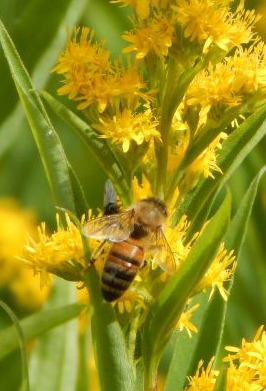 Honey bee (Apis mellifera) on solidago (golden rod)
Honey bee (Apis mellifera) on solidago (golden rod)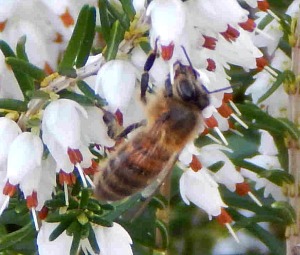 Honey bee on winter heather.
Honey bee on winter heather.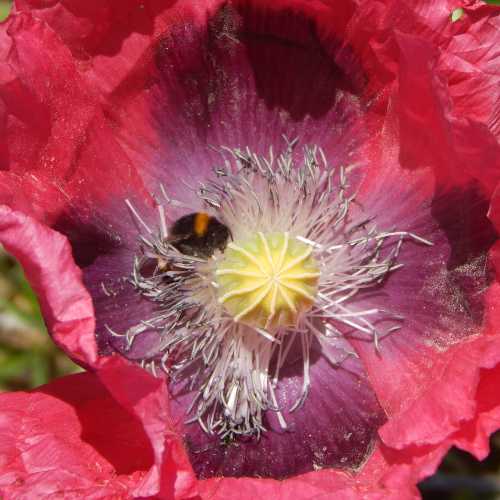 Bumble bee foraging on opium poppy
Bumble bee foraging on opium poppy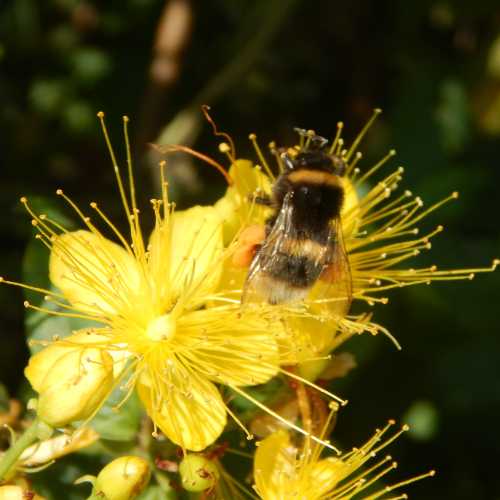 Bumble bee on hypericum
Bumble bee on hypericum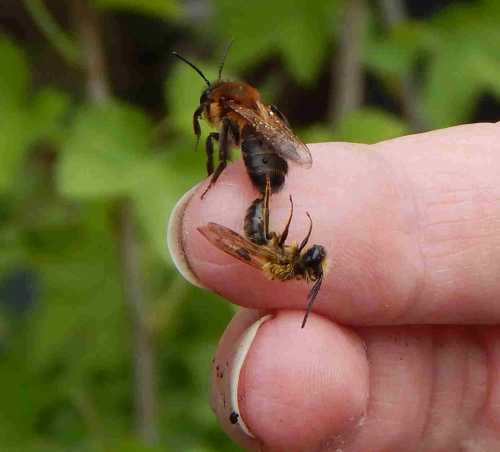 Chocolate mining bees mating
Chocolate mining bees mating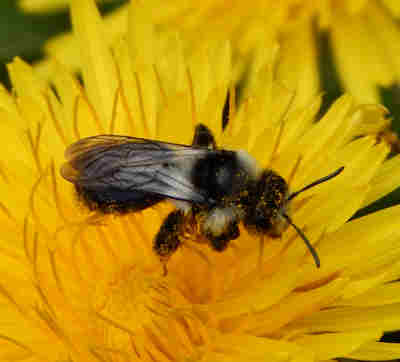 Ashy mining bee on dandelion
Ashy mining bee on dandelionIf you found this page helpful or interesting, I'd really be grateful if you would share it with others - if not this page, perhaps another, such as Gardening For Bees.
Thank you so much :) .